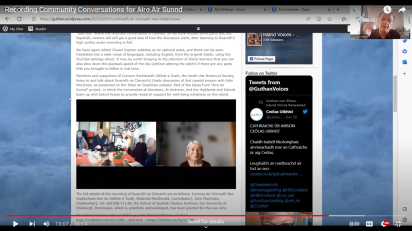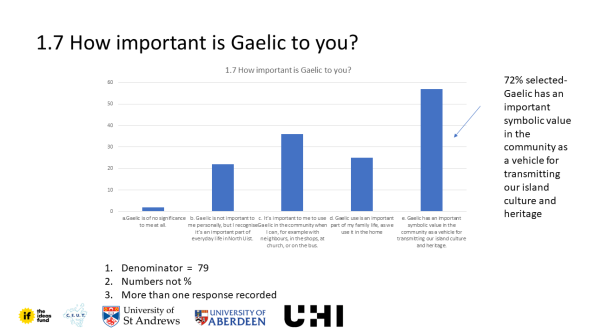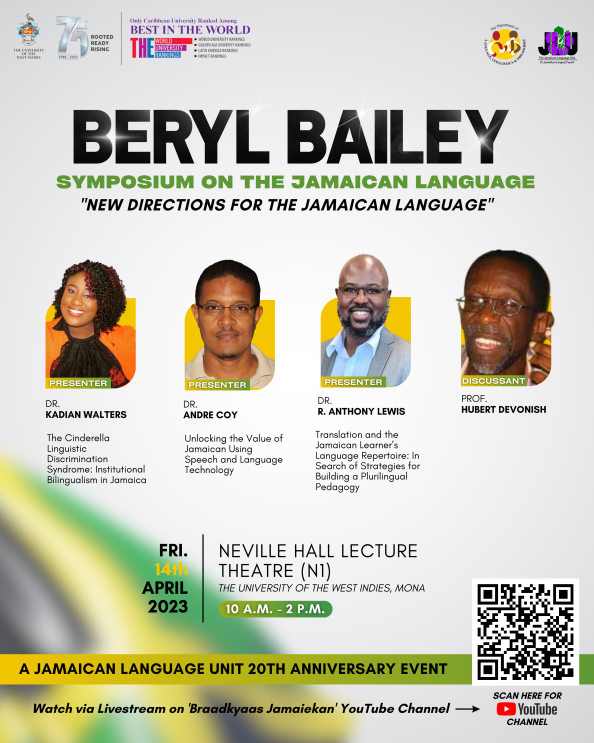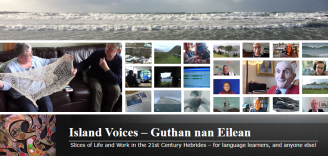Le Gordon Wells
 Following on from the North Uist “Wellbeing” survey, Gordon Wells this week reviewed the Island Voices contribution to the Aire air Sunnd project led by Comann Eachdraidh Uibhist a Tuath.
Following on from the North Uist “Wellbeing” survey, Gordon Wells this week reviewed the Island Voices contribution to the Aire air Sunnd project led by Comann Eachdraidh Uibhist a Tuath.
Adopting a slightly different format to Jess Wood’s presentations last week, Gordon speaks to camera on Zoom while screen-sharing key points from the Island Voices Aire air Sunnd webpage. Speaking in Gaelic he reinforces the point that using this language does not exclude non-speakers or early learners, given the multilingual technical resources that are now available online.
His video recaps the various recordings that have been created for the project in the past year or so, including the “Gaelic Crisis” presentation, and the Progress Report, as well as the recording sessions with community members covering storytelling, artefact description, and environmental issues. In so doing, it also shows how the YouTube subtitling and auto-translation functions can be put to effective use, and includes a quick demonstration of the Clilstore platform too, while emphasising the alternative effectiveness of recorded speech in a world where written communication is often taken for granted as the default norm.
Summing up, Gordon stresses the untapped value of various recording collections (in addition to Island Voices’ own), noting in particular how open resources such as Tobar an Dualchais have the potential to bring present and past communities together in a new manner to support North Uist cultural wellbeing, offering innovative ways of forward-looking engagement with the island’s Gaelic heritage so positively valued by all. At the same time, it needs to be recognised that community-wide engagement in such activity is dependent on community-wide comfort with the new digital tools that enable it. This is probably an area of work that needs closer attention.
Here’s Gordon’s talk on YouTube:
You can get a wordlinked transcript, with the video embedded, in this Clilstore unit: https://clilstore.eu/cs/11436
Tadhail air Island Voices – Guthan nan Eilean
Powered by WPeMatico










 Bliadhn’ Ùr Mhath and Happy New Year to Island Voices followers wherever you are!
Bliadhn’ Ùr Mhath and Happy New Year to Island Voices followers wherever you are!